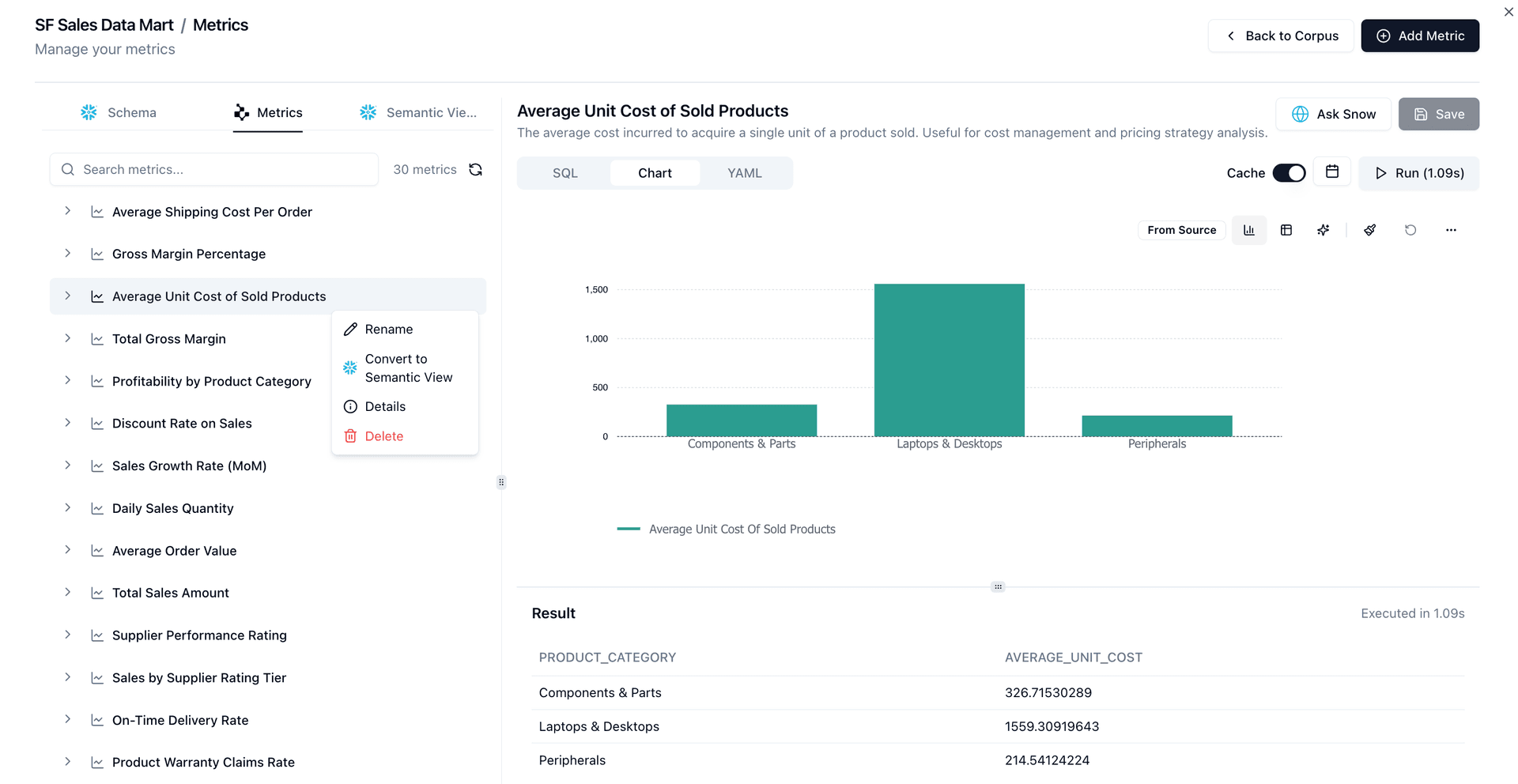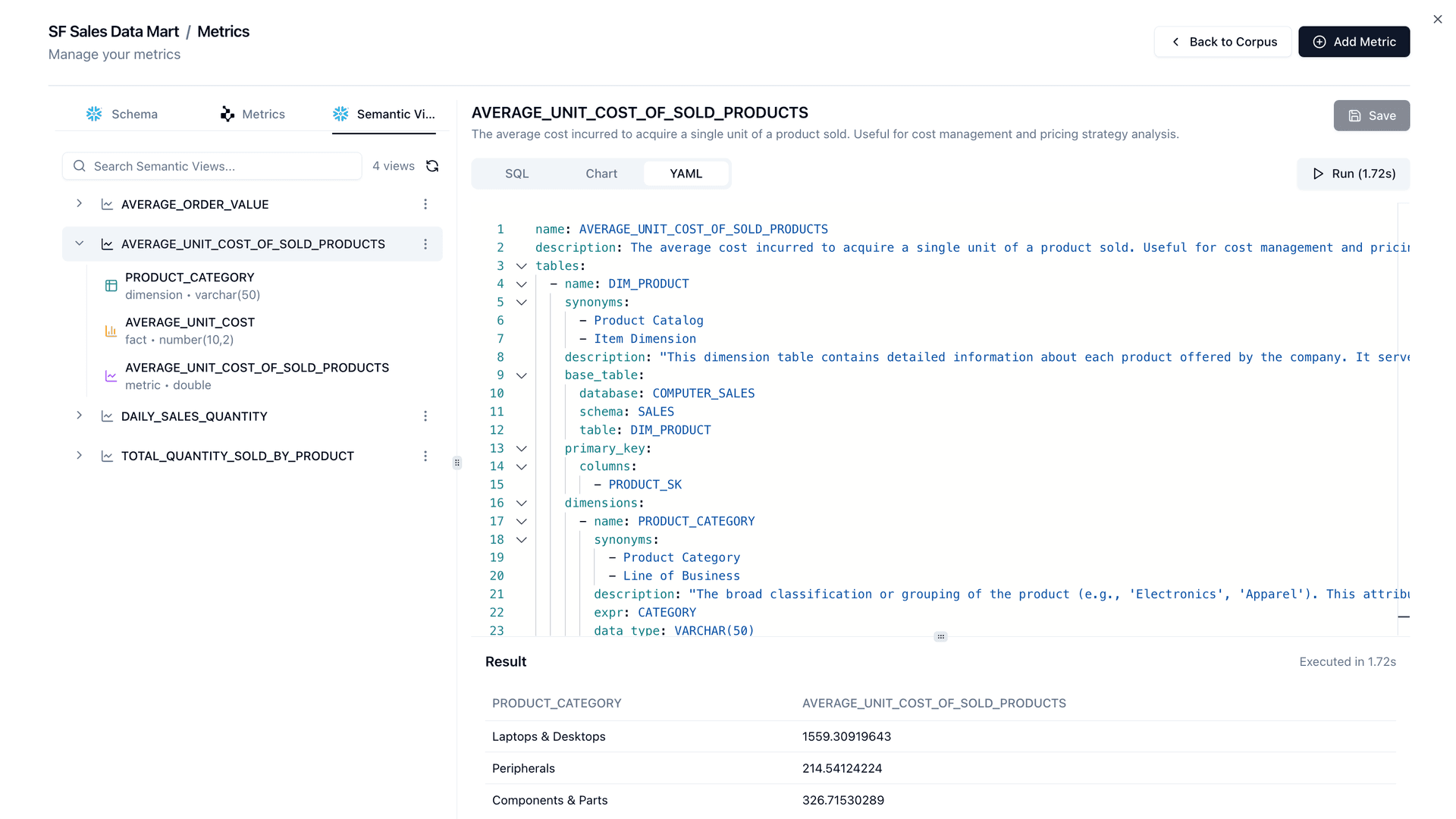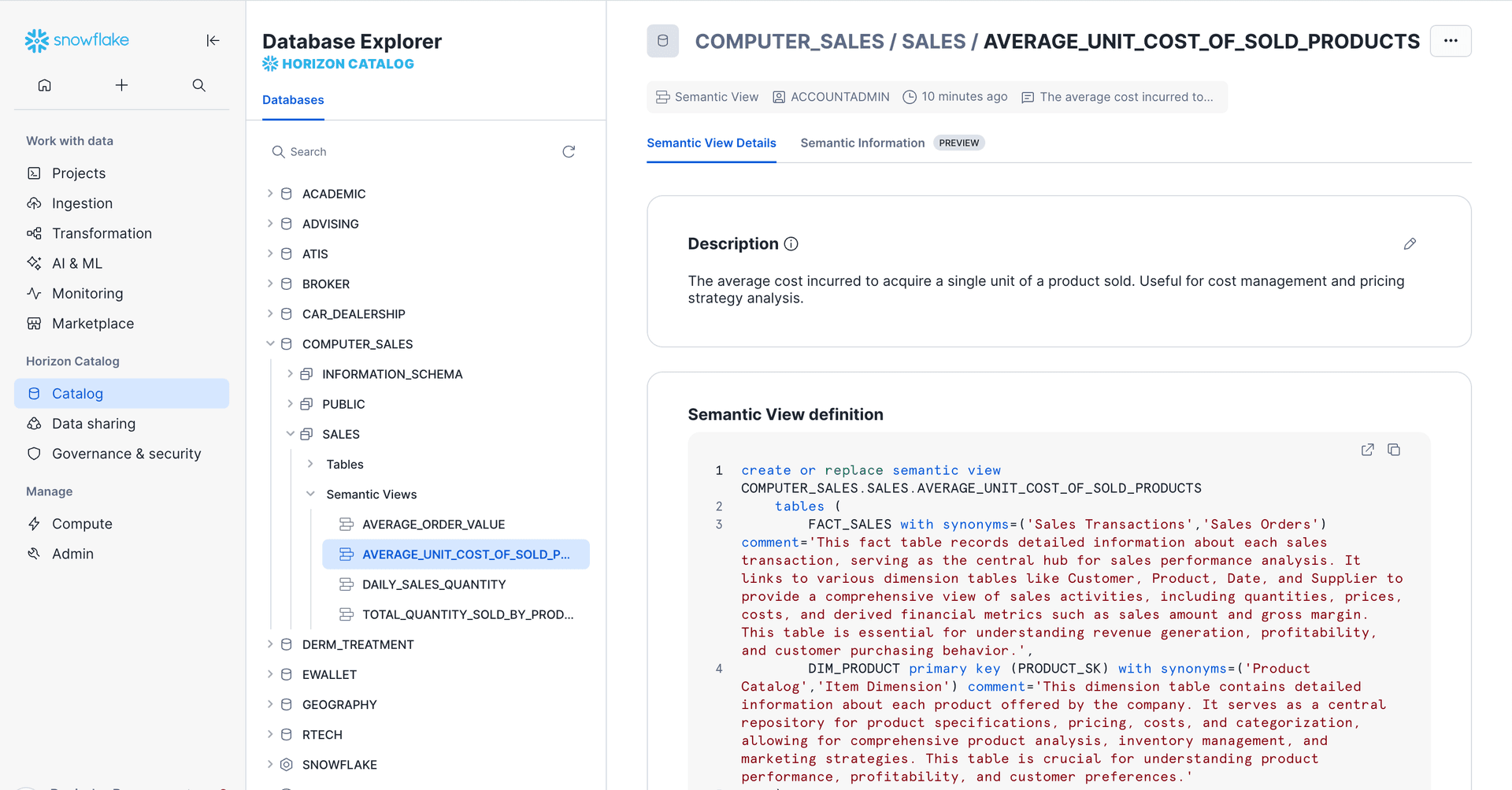TL;DR: With Codd AI, you can now create, execute, and manage Snowflake Semantic Views directly from our platform. No more spending hours mapping relationships, writing metric definitions, or manually typing synonyms or descriptions. Your enriched Codd AI Corpus already knows your data model, business rules, and metric definitions, so publishing a semantic view to Snowflake is as simple as one click.
Why This Matters
Semantic views play a critical role in analytics. They align raw technical data with business terms, making it easier for analysts and business users to query data in ways they actually understand.
But creating these views directly in Snowflake often requires significant manual effort:
Schema knowledge: Teams must understand table structures, relationships, and joins.
Manual coding: Metric definitions have to be re-created from scratch in SQL or YAML.
Metadata entry: Descriptions, synonyms, and business labels must be typed in manually.
Consistency risks: Without a single source of truth, different teams often define metrics differently, leading to duplication and misalignment.
This slows down analytics, increases the risk of errors, and makes governance harder.
How Codd AI Simplifies This
With Codd AI, all of that heavy lifting is already done.
The Codd AI Corpus acts as the source of truth, containing:
- An enriched data model with entities and relationships
- User certified metric definitions, including filters, aggregations, and time grains
- Business synonyms and human-friendly descriptions
Now, with just a click, those same definitions can be converted into Snowflake Semantic Views. Instead of rebuilding, you're simply publishing what already exists in Codd AI.
From Codd AI Metric → Semantic View in One Click
In the Codd AI UI, every certified metric can now be converted into a semantic view with a single action.
 Screenshot 1 – Converting a Metric to a Semantic View (Average Unit Cost of Sold Products → Convert to Semantic View)
Screenshot 1 – Converting a Metric to a Semantic View (Average Unit Cost of Sold Products → Convert to Semantic View)Here, the user selects "Average Unit Cost of Sold Products", then chooses Convert to Semantic View. Codd AI automatically maps the joins, applies the metric definition, and includes descriptions and synonyms.
Generated Semantic View in Codd AI
Once converted, the metric appears in the Semantic Views tab. Codd AI creates the semantic view in Snowflake and allows users to review it in both SQL and YAML formats.
This generated Semantic View captures the fact tables, dimensions, measures, and business metadata, all aligned with certified definitions.
 Screenshot 2 – Generated Semantic View in Codd AI
Screenshot 2 – Generated Semantic View in Codd AINotice how the dimension (PRODUCT_CATEGORY), fact (AVERAGE_UNIT_COST), and metric (AVERAGE_UNIT_COST_OF_SOLD_PRODUCTS) are automatically included, along with human-readable business descriptions and synonyms.
Semantic View in Snowflake
Once published, the semantic view is fully available within Snowflake itself. Users can explore it directly in the Snowflake UI, execute queries, and integrate it into workflows, including Snowflake Cortex Analyst for AI-powered analytics.
 Screenshot 3 – Semantic View in Snowflake
Screenshot 3 – Semantic View in SnowflakeHere you see the Average Unit Cost of Sold Products semantic view defined in Snowflake's Horizon Catalog. The YAML generated in Codd AI is now represented as a native semantic view, ready for downstream use.
This closes the loop: definitions from the Codd AI Corpus flow directly into Snowflake, ensuring analytics teams always work with trusted, governed semantics.
Leverage Metrics Across Codd AI, Snowflake, and Cortex Analyst
One of the biggest advantages of using Codd AI to manage semantic views is that you don't need to redefine your metrics depending on where you want to use them.
When you convert a Codd AI metric into a Snowflake Semantic View, the certified definition, including its logic, joins, filters, synonyms, and descriptions, travels with it. This means you can:
Use the metric in Codd AI – Run queries, validate results, and keep governance in one place.
Query it directly in Snowflake – Analysts can access the semantic view just like any other Snowflake object, without needing to understand the underlying joins or SQL logic.
Leverage it in Snowflake Cortex – The same semantic view can be surfaced to Cortex for natural language queries and AI-driven analytics.
This ensures a single source of truth for business metrics, regardless of whether they're being accessed through SQL, BI tools, or AI interfaces. No duplication, no manual rework, and no risk of misalignment between platforms.
In other words, Codd AI makes your semantic layer portable: once defined, it can be executed consistently across your data and analytics ecosystem.
Semantic views are essential for bringing consistency and governance to analytics. Creating them directly in Snowflake required manual effort and constant upkeep.
By extending Codd AI to manage Snowflake Semantic Views, organizations can now publish trusted, business-ready definitions into their Snowflake environment in minutes, not weeks.
Create. Execute. Manage. All from one place: Codd AI.
🎬 Watch the Demo
See the one-click Semantic Views feature in action:
Watch the 90-Second Demo Video
Learn how to:
- Convert Codd AI metrics to Snowflake Semantic Views with one click
- Review generated YAML and SQL definitions
- Publish directly to Snowflake's Horizon Catalog
Ready to Transform Your Analytics?
See how Codd AI can streamline your semantic layer management and accelerate your analytics workflow.
Get started today:
- Watch the full demo video to see the complete workflow
- Schedule a personalized demo to discuss your specific use case
- Start your free trial and experience the power of Codd AI


